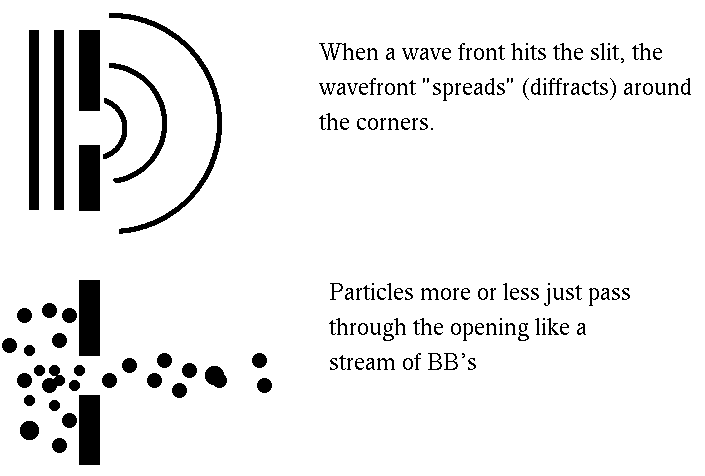This is a profound question and I will not delve too deeply into the issues but rather, will simply point out some interesting aspects of light and some questions about light.
I noted that light (EM radiation) has wave-like properties. However, there are some experiments where light has particle-like properties. The core of the problems with our understanding of light concerns this duality in its nature.
Wave-like or Particle-like?
This is a conceptual problem because waves are spread out in space, while particles are like BB's, that is, concentrated to points in space. There are some nice experiments which bring these points home.
- Diffraction and Interference

- Black Body Radiation

-
Energy = Planck's constant x frequency = h x c / W
where h is Planck's constant. Note that f x W = c and the photon's energy is large for high frequency or short wavelength radiation. The packets of light (energy) are referred to as
photons A water wave or sound wave can have any energy depending upon its amplitude and so this notion is odd for a wave.
- Photo-electric Effect
-
This is an another example of
an experiment where light behaves as a particle,
not as a
spread-out wave.

- Double Slit Experiment
-
The results of shining high intensity beams of light on slits are
interesting. When a low intensity beam of radiation strikes the
screen, it interacts
one at a time, i.e., it interacts like it is made of particles. However,
if we wait long
enough, the pattern which gets built up on
the screen is the one predicted by the wave
model, i.e., the light behaves like a wave.
